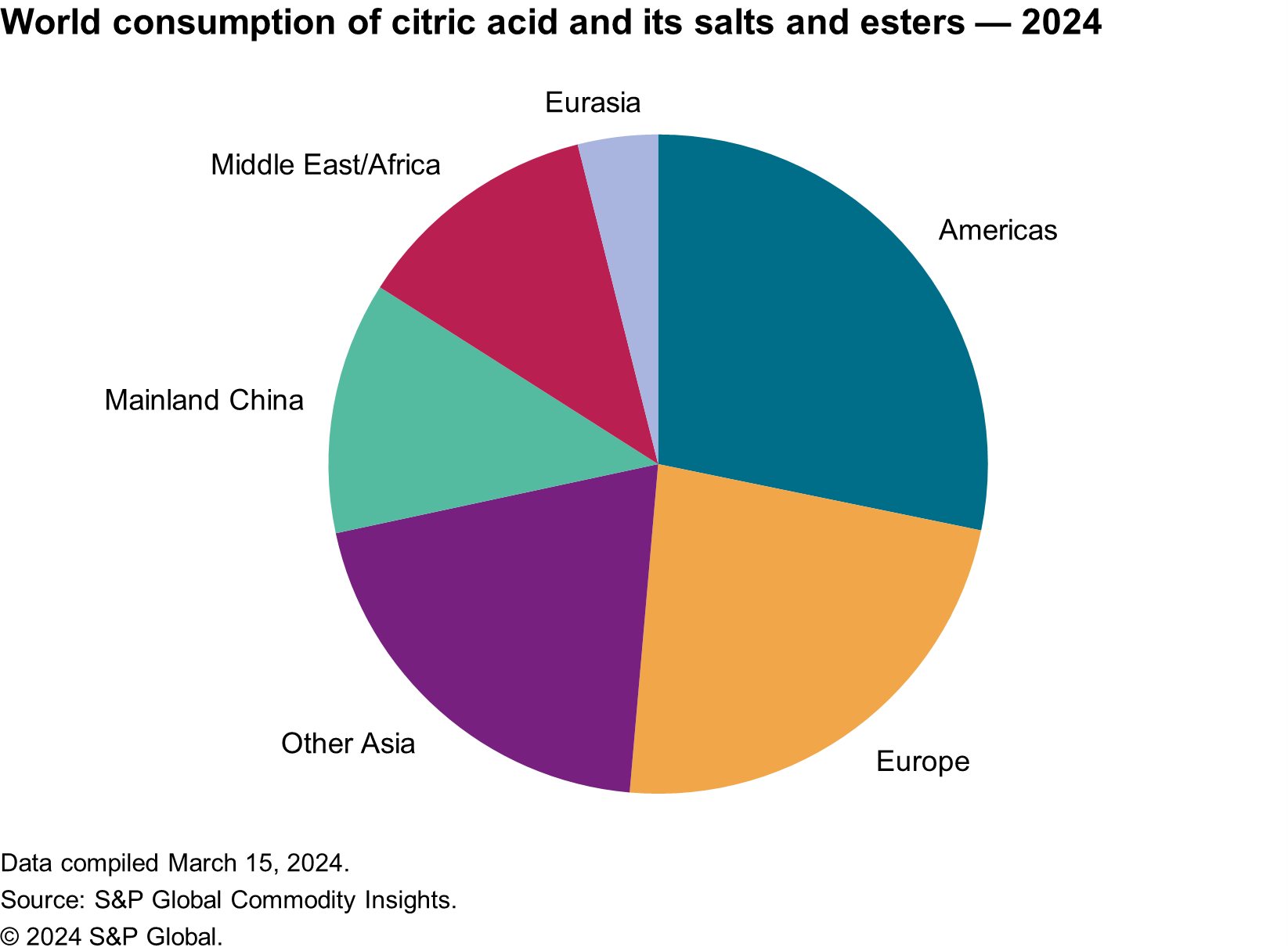Published June 2024
Citric acid is the most widely used food acidulant. The acid and its derivatives are also ingredients in detergents and cleaners, personal care products, pharmaceuticals and industrial applications.
Nearly two-thirds of world consumption of citric acid is in beverages and food, primarily as an acidulant; carbonated soft drinks account for most use. Citric acid adjusts acidity (pH), provides sourness and tartness, enhances flavors, and controls the growth of microorganisms. Food applications include candies, jams and jellies, canned fruits and vegetables, and processed cheese.
In household laundry detergents, citric acid and citrate salts act as builders, enhancing detergent performance by sequestering hardness ions and decreasing soil and dirt redeposition. Because citric acid eliminates common household bacteria, it is widely used in hard-surface cleaners and disinfecting wipes.
The following chart shows world consumption of citric acid and its salts and esters by region:

The COVID-19 pandemic had a major impact on citric acid markets in 2020. Sales of laundry detergents and cleaning products surged, leading to a significant rise in citric acid consumption in these end uses versus 2019. In contrast, consumption of citric acid in beverages and foods decreased slightly because away-from-home consumption of carbonated soft drinks (CSDs) in restaurants and cafeterias fell. After the pandemic, consumption of citric acid in beverages accelerated. When restaurants, bars and cafeterias reopened, strong sales of zero-sugar soft drinks, nonalcoholic beverages and hard seltzers more than offset the overall downward trend in CSD consumption. Overall demand for citric acid is expected to increase at an average annual rate of 3.0% during 2024–29.
For more detailed information, see the table of contents, shown below.
S&P Global’s Chemical Economics Handbook – Citric acid is the comprehensive and trusted guide for anyone seeking information on this industry. This latest report details global and regional information, including

Key benefits
S&P Global’s Chemical Economics Handbook – Citric acid has been compiled using primary interviews with key suppliers and organizations, and leading representatives from the industry in combination with S&P Global’s unparalleled access to upstream and downstream market intelligence and expert insights into industry dynamics, trade and economics.
This report can help you
- Identify trends and driving forces influencing chemical markets
- Forecast and plan for future demand
- Understand the impact of competing materials
- Identify and evaluate potential customers and competitors
- Evaluate producers
- Track changing prices and trade movements
- Analyze the impact of feedstocks, regulations and other factors on chemical profitability


















